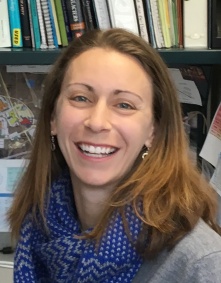The RENEW Institute - A Multidisciplinary Initiative
Kristin Poinar

Kristin Poinar is an Associate Professor in the Department of Earth Sciences. She focuses her research on the Greenland Ice Sheet: how is it melting, how is the ice flowing into the ocean, and what are the interactions between those processes? Her primary tool is process-scale ice-sheet models, incorporating remote sensing data.
Contact Information:
445 Hochstetter Hall
Phone: (716) 645-4286
kpoinar@buffalo.edu
For more information about Dr. Poinar please see her research website: UB Glacier Modeling Lab